Postponed: Yongdaeri Hwangtae Festival (용대리 황태축제)
17.2 Km 17883 2022-05-16
Yongdae 3-ri Intersection, Inje-gun, Gangwon-do
• 1330 Travel Hotline: +82-2-1330 (Korean, English, Japanese, Chinese) • For more info: +82-33-462-4805
Yongdaeri Hwangtae Festival aims to promote the city as the best place for hwangtae (pollack) and to inform people about the quality and nutritional value of pollack in order to boost the region's economy. An array of hands-on pollack-themed programs are available for visitors to take part in.
Deungbul Garden (등불가든)
17.2 Km 19629 2024-02-16
23 Powolladeul-gil, Yangyang-eup, Yangyang-gun, Gangwon-do
Located near Naksanhaebyeon Beach, Deungbul Garden specializes in Korean beef and pine mushroom dishes. Its signature dishes are hanu gui (grilled Korean beef) and songibeoseot jeongol (pine mushroom hot pot). The restaurant prides itself on serving tender and juicy Korean beef, which pairs exceptionally well with the pine mushrooms, a regional specialty known for their superior flavor, especially when grilled with the beef. Pine mushrooms, named for their growth under pine trees and their pinecone-like aroma, are celebrated for their fragrance, scent, and texture, making them a premier ingredient in Korean cuisine. The menu also features other delectable options like songibeoseot bulgogi (pine mushroom and bulgogi), yukhoe (beef tartare), and kongnamul doenjang jjigae (bean sprout soybean paste jjigae).
Bangtaesan National Recreational Forest (국립 방태산자연휴양림)
17.5 Km 23677 2021-08-10
241, Bangtaesan-gil, Inje-gun, Gangwon-do
+82-33-463-8590
Bangtaesan National Recreational Forest is mostly comprised of natural forests, with some man-made sections included. The recreational forest is located in the valley between Guryongdeokbong (alt. 1,388 m) and Jueokbong (alt. 1,443 m) Peaks. The area is known for its beautiful scenery like the two-tier waterfall and Madangbawi Rock. The varied trees provide fantastic foliage year around, especially in autumn. Wild animals like rabbits, roe deer, and squirrels inhabit the forest.
Naksansa Temple (낙산사)
17.5 Km 61805 2022-12-22
100, Naksansa-ro, Yangyang-gun, Gangwon-do
+82-33-672-2447
This ancient temple was built in the 11th year of King Munmu’s reign of Silla (671) by the Buddhist monk Uisang. Naksansa Temple is one of the foremost sights of Yangyang, and one of the most historic sites in the region. Along with Ganghwa’s Bomunsa Temple and Namhae’s Boriam Hermitage, it is said to be one of the three centers of the cult of Avalokitesvara in Korea. Its handsome view overlooking the East Sea has earned it a spot in the Eight Sights of Gwandong (eight famous sights in Yeongdong region of Gangwon-do), documented throughout the ages in many classic literature and poetry. Today’s Naksansa Temple is a product of many restorations and expansions, and has many examples of cultural heritage within its walls. There is a 16 meter-tall statue of the Avalokitesvara Bodhisattva to Uisangdae, a pavilion built to overlook the sunrise over the East Sea on a coastal cliff, Hongnyeonam Hermitage, built over the crashing waves, Seven-story Stone Pagoda of Naksansa Temple, Yangyang (Treasure No. 499), a Joseon-era pagoda with Goryeo-era style, and Stupa, Stele, and Reliquaries of Naksansa Temple, Yangyang (Treasure No. 1723), including a number of sarira. A mountain fire in 2005 resulted in the loss of 20 buildings, including the building that housed its bronze bell (formerly Treasure No. 479 of Korea). The temple also operates templestay programs available through its website.
Naksan Provincial Park (낙산도립공원)
17.6 Km 10954 2018-01-25
59, Haemaji-gil, Yangyang-gun, Gangwon-do
+82-33-670-2518
Naksan Provincial Park takes up 24km of shoreline in Yangyang, Gangwon-do. The park is centered on Naksansa Temple and Naksan Beach, but includes Osan, Dongho, and Hajodae Beaches, as well as many lakes and cliffs. The park is a great place to learn about Korean culture, including Buddhist culture at Naksansa Temple and other cultural relics, and the shoreline cliffs of pine trees. The park is a popular attraction in the summer, when visitors can swim in the ocean and play in the sand along the coast.
Jeongin Hoesikdang (정인회식당)
17.6 Km 18009 2024-02-16
32 Naksansa-ro, Ganghyeon-myeon, Yangyang-gun, Gangwon-do
Jeongin Hoesikdang, situated near Naksan Beach in Yangyang, specializes in mul hoe (cold raw fish soup) and saengseon jjigae (fish jjigae). It prides itself on using fresh fish, sourced from nearby ports and used within a day of purchase. The restaurant's signature dish is sanureok maeuntang (spicy rockfish stew). Other popular menu items include modeum mul hoe (assorted cold raw fish soup), seongge albap (sea urchin roe rice), and ojingeo hoe deopbap (raw squid bibimbap). Additionally, soups like gomchi tang (spicy moray eel stew) and haemul tang (spicy seafood stew) are also highly recommended. For guests interested in local attractions, the scenic Naksansa Temple and Naksanhaebyeon Beach are nearby.
Geumgangsan Daegehoetjip (금강산대게횟집)
17.6 Km 169 2021-03-20
8-5, Haemaji-gil, Yangyang-gun, Gangwon-do
+82-33-671-5207
A restaurant that sells a variety of seafood. The best menu at this restaurant is king crab. This seafood restaurant is located in Yangyang-gun, Gangwon-do.
Naerincheon River Pothole-Gangwon Peace National Geopark (내린천 포트홀-강원평화지역 국가지질공원)
17.7 Km 18291 2019-09-04
Buk-ri, Girin-myeon, Inje-gun, Gangwon-do
+82-33-249-3881
Naerincheon River starts out as a small stream on Bungnyongsan Mountain and flows down Sogyebangsan Mountain before joining with other small valley streams to create the larger river that most people know. The river has created a valley with many interesting and uniquely shaped rocks as it flowed down the mountainside over the years. The waters are so pure, the small pebbles and sand lining the bottom of the stream can be seen clearly. There are a number of areas along the stream perfect for relaxing and enjoying some time in nature. Many families visit and enjoy fishing and the pure environment. The river is also well-known for rafting.
Sokch Seorak Sunrise Park (속초 설악해맞이공원)
17.8 Km 18358 2022-12-26
3664, Donghae-daero, Sokcho-si, Gangwon-do
+82-33-639-2196
Referred to as "Namulchi," Sokcho Seorak Sunrise Park is located in the area of National Highway 7, the main point toward Daepohang Port, Yangyang, and Seoraksan Mountain. The park is perfect for enjoying a sunrise trip. The park area includes Sunrise Plaza, Lover’s Road, Happy Road, Love Road, other various themed sculptures, symbolic sculptures of Seoraksan Mountain, and light fountains, making it a great place to take a walk.
Uisangdae Pavilion (낙산사 의상대)
17.8 Km 16142 2021-04-12
100, Naksansa-ro, Yangyang-gun, Gangwon-do
+82-33-672-2447
This pavilion is located on a seaside cliff on the way from Yangyang’s Naksansa Temple to Gwaneumgul Cave of Hongnyeonam Hermitage. The word “dae” in Uisangdae refers to a building built at a vantage point for areas with beautiful scenery. Indeed, the view of the East Sea and the coast from Uisangdae Pavilion awarded its recognition as one of the Eight Sights of Yangyang, and a must-visit place for all visitors to Naksansa Temple. Jeong Cheol (pen-name: Songgang), a famed scholar and writer of the poem Song of Diamond Mountains, chose the pavilion as one of the Eight Sights of Gwandong, and the pavilion is today one of the popular sites for sunrise-viewing on the east coast of Korea. Together with Hongnyeonam Hermitage, it is designated as the Scenic Site No. 27 of Korea under the name “Uisangdae Pavilion and Hongnyeonam Hermitage of Naksansa Temple, Yangyang.” Uisangdae is named after Uisang, a respected Silla-era Buddhist monk who is said to have founded this temple in 671 (11th year of King Munmu’s reign of Silla), and many stories of his deeds can still be found in the temple. For instance, Uisangdae is said to be the site where he meditated before founding Naksansa Temple at its present site. Today’s pavilion was restored to its present hexagonal form in 1995.
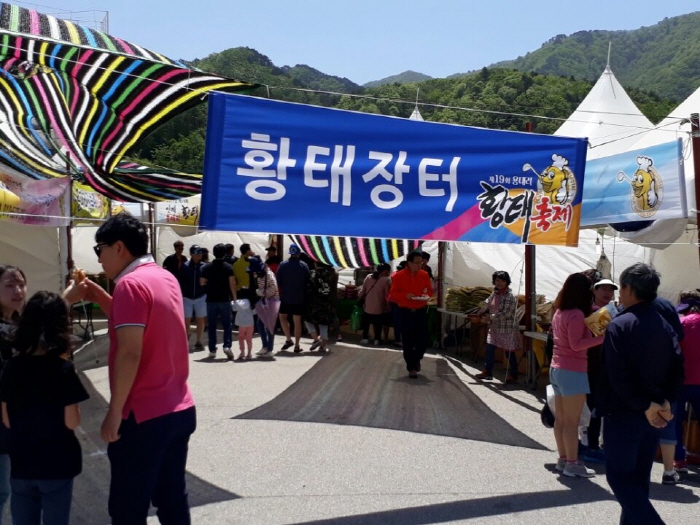
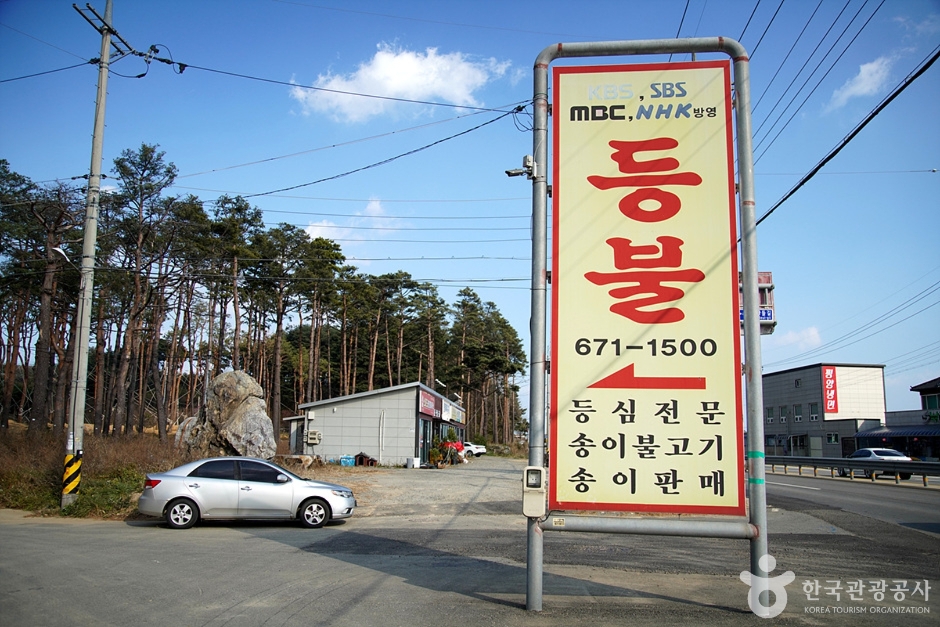
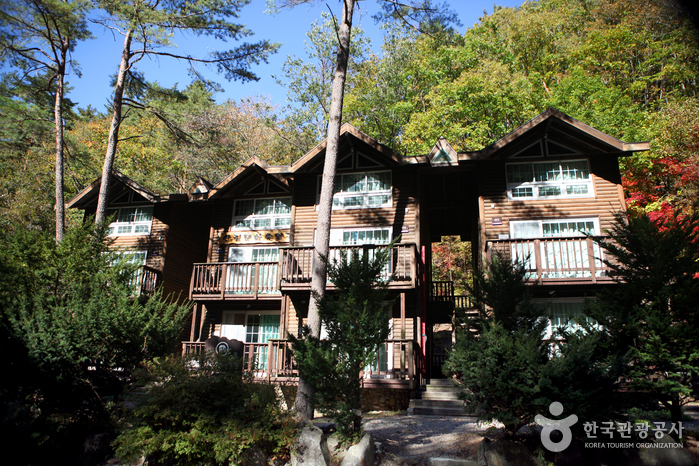

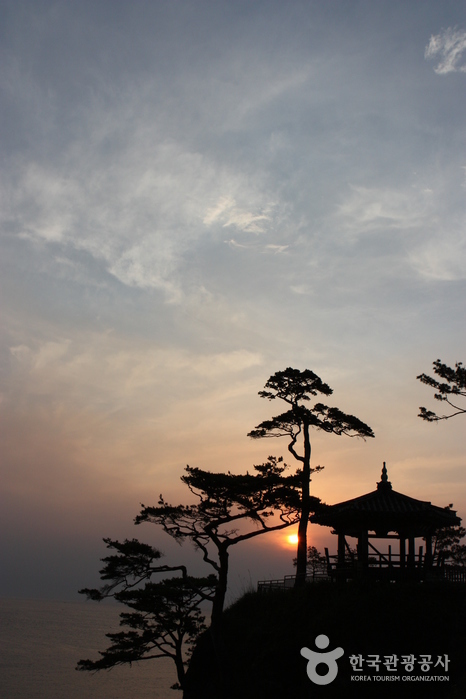
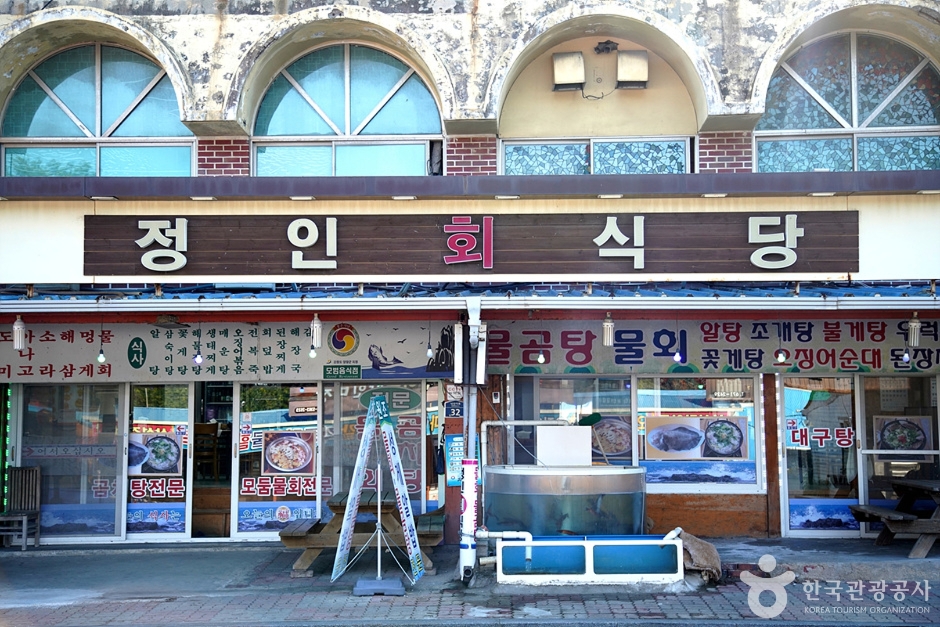
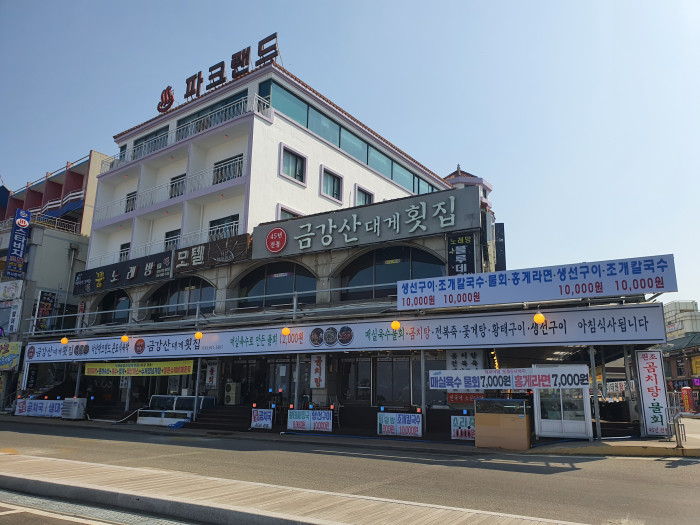
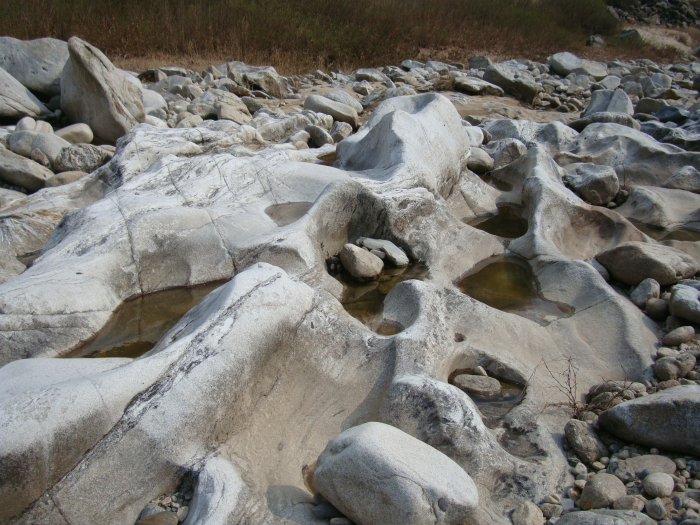
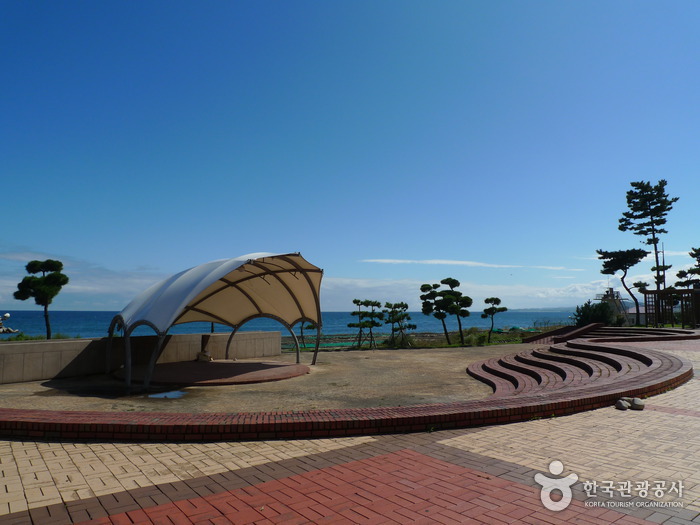
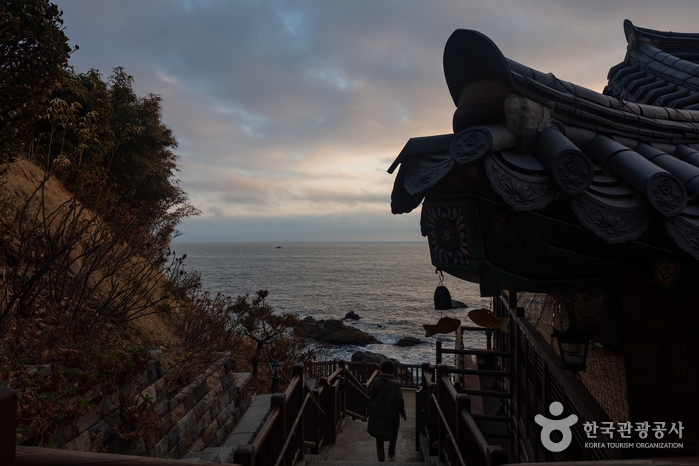
 English
English
 한국어
한국어 日本語
日本語 中文(简体)
中文(简体) Deutsch
Deutsch Français
Français Español
Español Русский
Русский